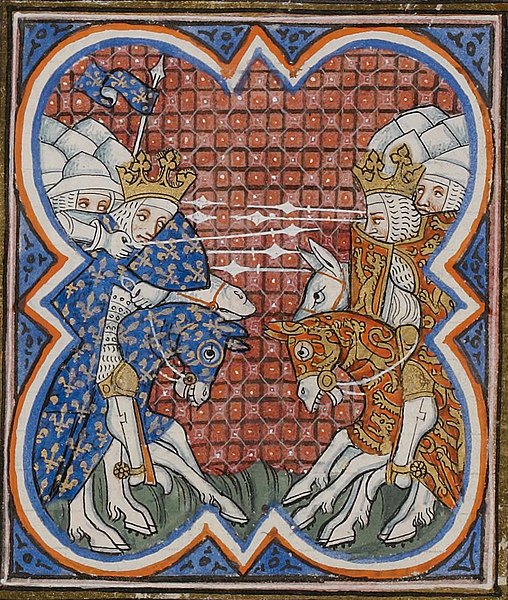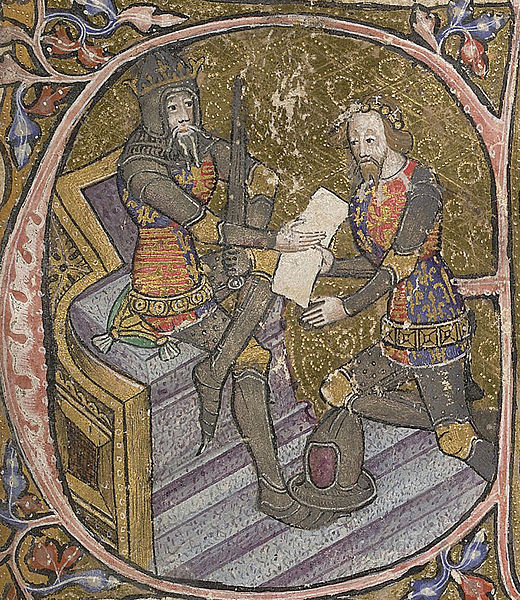Edward of Woodstock, known to history as the Black Prince, was the eldest son and heir apparent of King Edward III of England. He died before his father and so his son, Richard II, succeeded to the throne instead. Edward nevertheless earned distinction as one of the most successful English commanders during the Hundred Years' War, being regarded by his English contemporaries as a model of chivalry and one of the greatest knights of his age.
Edward as a Knight of the Garter, 1453, illustration from the Bruges Garter Book, British Library
The Black Prince at Crécy by Julian Russell Story, 1888, shows the prince contemplating his slain opponent, King John of Bohemia. Telfair Museums, Savannah, Georgia
Battle of Poitiers, from the Grandes Chroniques de France
Edward is granted Aquitaine by his father King Edward III. Initial letter "E" of miniature, 1390; British Library, shelfmark: Cotton MS Nero D VI, f.31
Edward III, also known as Edward of Windsor before his accession, was King of England from January 1327 until his death in 1377. He is noted for his military success and for restoring royal authority after the disastrous and unorthodox reign of his father, Edward II. Edward III transformed the Kingdom of England into one of the most formidable military powers in Europe. His fifty-year reign is one of the longest in English history, and saw vital developments in legislation and government, in particular the evolution of the English Parliament, as well as the ravages of the Black Death. He outlived his eldest son, Edward the Black Prince, and was succeeded by his grandson, Richard II.
Drawing as head of the Order of the Garter, c. 1430 – 1440 in the Bruges Garter Book
To mark his claim to the French crown, Edward quartered the arms of France, placing them in the first and fourth quarters. English stained glass, c. 1350 – 1377.
Groat featuring Edward III
Edward III counting the dead on the battlefield of Crécy








